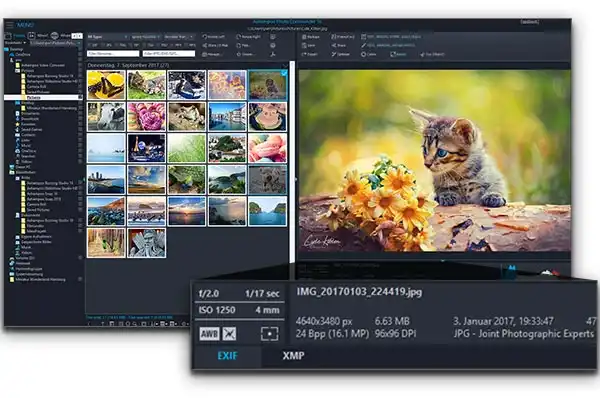It’s a sinking feeling I’m sure many have experienced: an accidental deletion, a corrupted SD card, or a USB stick that suddenly stops working, and just like that, precious photos are gone. My first impulse used to be to search through confusing forums for a solution. But I’ve found a much simpler and safer way: using Ashampoo Photo Recovery 2 to get those memories back.
Table of Contents
This software is designed to be powerful yet accessible to everyone, regardless of technical skill. It performs a deep scan of the storage device and can bring back images that seemed permanently lost. The best part is that Win Magazine readers can get it for free, a significant saving on its usual €40 price tag.
The program supports a wide range of image formats, including common ones like JPEG and PNG, as well as professional RAW files from major camera brands. It can even search for images embedded within other documents like PDFs and Office files.
🔑 Getting Your Free License and Installing
Before I can start recovering photos, I need to activate the software with a free license key. The process is quick and easy. During installation, I click on ‘Get free activation key,’ which opens a webpage.
I enter the email address I used to register for a myAshampoo account (or create a new one if I don’t have one). The webpage then displays my personal license key.
I simply copy this key, paste it back into the installation window, and click ‘Activate now!’. After that, I just follow the on-screen prompts to complete the installation and launch the tool.
💾 Scanning a Drive for Lost Photos
The interface of Ashampoo Photo Recovery 2 is refreshingly simple. To start, I make sure the correct drive is selected from the dropdown menu under the ‘Device’ tab. If I just connected a USB drive or SD card, I click ‘Refresh device list’ to make sure it appears.
Next, I need to tell the software what kind of photos I’m looking for. I can choose from several scan modes, such as a quick scan for common image files or a high-resolution scan for digital camera RAW files.
I can also refine the search using filters. For instance, I can tell the program to ignore files smaller than a certain size (like 50 KB) or set a maximum file size. Once I’ve configured my settings, I click the large ‘Search for photos!’ button to begin the scan. For users interested in photo editing, you might also like this guide on getting started with GIMP.
🖼️ Selecting and Saving Your Recovered Images
The scanning process can take some time, especially on a large drive. In one of my tests, it took about 2 hours and 30 minutes to analyze a 500GB external hard drive, but it successfully recovered over 18,515 photos! When the scan is complete, the software displays thumbnails of all the images it found.
This is where the preview function is invaluable. I can look through all the recovered images and select only the ones I want to save. After checking the boxes for the photos I need, I click ‘Keep selected photos’.
The software then saves them to the destination folder I specified in the settings (by default, it’s in the Pictures folder). It’s a surprisingly simple and effective way to rescue memories I thought were gone forever. For organizing large collections, I’d also recommend looking into tools like KPhotoAlbum, as detailed in this guide to organizing photos.
More Topics
- Windows 11 – How to Monitor Your PC’s RAM
- Motorola Razr 60 – A Guide to the New Foldable with Moto AI
- Lenovo ThinkCentre Neo 50a – A Guide to the All-in-One PC
- Amazon Fire TV Stick – How Piracy and Sideloading Are Being Blocked
- Ring Cams – How to Use the New ‘Video Descriptions’ AI Feature
- How to Turn a Travel Itinerary into an Animated Map Video
- Nothing Phone 3 – A Guide to Specs, Features, and Price

